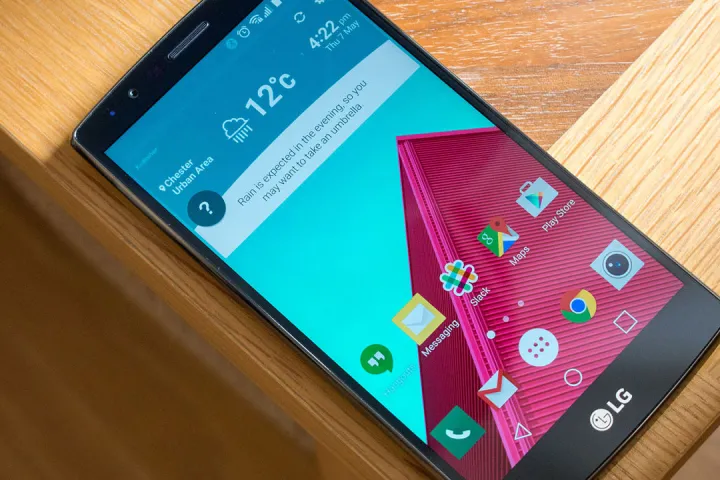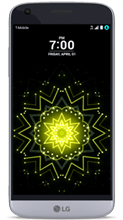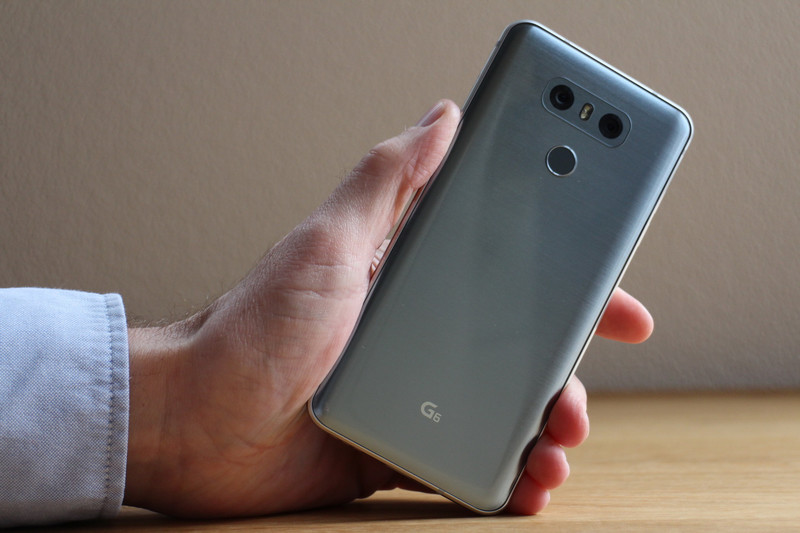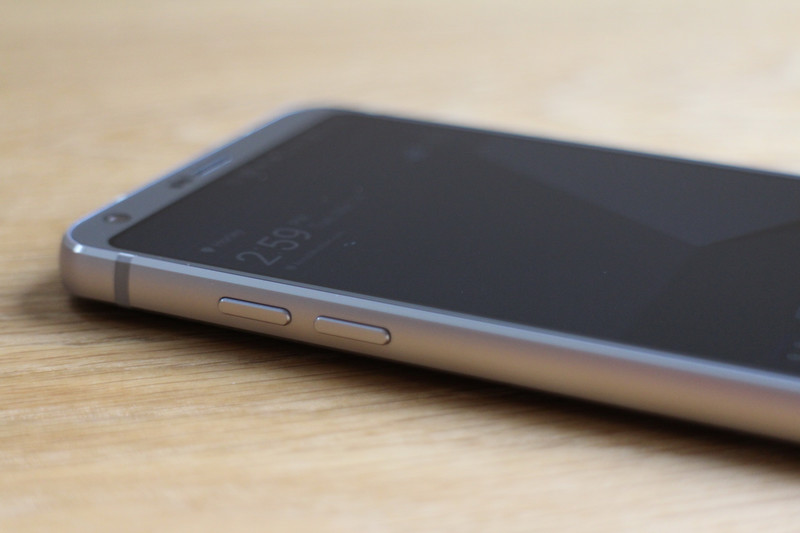
With a new metal exterior, rounded edges, and super-slim bezels, the G6 looks like a different sort of monster compared to its predecessor, the LG G5. But is it worth the upgrade? We’ll show you the specs and you can decide for yourself.
Specs and battery life
|
LG G6  |
LG G5  |
||
| 148.9 x 71.9 x 7.9 millimeters (5.8 x 2.83 x 0.31 inches) | 149.4 × 73.9 × 7.7 millimeters (5.9 × 2.9 × 0.3 inches) | ||
| Weight | 5.7 ounces | 5.6 ounces | |
| Screen | 5.7-inch LCD | 5.3-inch LCD | |
| Resolution | 1,440 x 2,880 pixels (565 pixels-per-inch) | 1,440 × 2,560 pixels, (554 ppi) | |
| OS | Android 7.0 Nougat | Android 6.0 Marshmallow (Upgradeable to 7.0 Nougat) | |
| Storage | 32GB + MicroSD storage card (64GB is some markets) | 32GB + MicroSD storage card | |
| NFC support | Yes | Yes | |
| Processor | Snapdragon 821 | Snapdragon 820 | |
| RAM | 4GB | 4GB | |
| Connectivity | Wi-Fi, 4G LTE, HSPA, GSM | Wi-Fi, 4G LTE, HSPA+, GSM, CDMA | |
| Ports | USB Type-C, 3.5mm headphone jack | USB Type-C, 3.5mm headphone jack | |
| Camera | Front 5MP, Dual rear 13MP + 13MP wide | Front 8MP, Dual rear 16MP + 8MP | |
| Video |
|
2160-p 30fps, 1080-p 30/60fps | |
| Bluetooth | Yes, 4.2 | Yes, 4.2 | |
| Fingerprint sensor | Yes | Yes | |
| Other sensors | Gyroscope, accelerometer, proximity, compass, barometer | Gyroscope, accelerometer, proximity, compass, barometer | |
| Water Resistant | Yes, IP68-rated | No | |
| Battery | 3,300mAh | 2,800mAh | |
| Quick Charging | Yes | Yes | |
| Wireless Charging | Yes | No | |
| Color offerings | Black, Platinum, Mystic White (outside the U.S.) | Silver, titan, gold, pink | |
| Availability | Available March 30 on Verizon, April 7 on AT&T, T-Mobile, and Sprint | Now | |
| DT Review | 4.5 out of 5 stars | 4 out of 5 stars |
The G6 uses a Qualcomm Snapdragon 821 processor with 4GB of RAM. Qualcomm claims the Snapdragon 821 is 10-percent faster than the Snapdragon 820 built into the G5, and it shows. In the U.S., you’ll only get 32GB variants of both the G6 and G5, but they both support MicroSD card expansion in case that’s not enough.
Both are capable of running Android 7.0 Nougat (you’ll need to update your G5), and both feature USB Type-C ports with 3.5mm headphone jacks. Rather than using a 2,800mAh modular battery, the G6 includes a built-in, 3,300mAh battery. Like the G5, the G6 can charge up more quickly with Qualcomm’s Quick Charge capacity. What’s better is that U.S. models will also utilize wireless charging.
You’ll certainly have a smoother experience on the G6, and your smartphone will also last longer throughout the day.
Winner: LG G6
Design and display
The most noticeable difference with the LG G6 is the sleek design overhaul. The notorious “plastic” look and feel of the G5 has been replaced with a clean metal-and-glass exterior, with rounded edges and minimal bezels along the edge. These rounded corners add structural integrity to the G6 by more aptly dispensing shock from drops throughout the periphery rather than directly at a hard corner. With an 80 percent screen-to-body ratio, the G6 — a true handheld — isn’t wasting any space.
The G6 also leaves the oversold and underdeveloped modular
But the lack of a removable battery allows LG to make the G6 dust- and waterproof with an IP68 rating — meaning the
The new Quad HD display also pops in comparison to the G5. The G6 utilizes a larger 5.7-inch LCD screen, while still maintaining a compact frame thanks to slimmer bezels. LG also touts the G6 as the first phone to support Dolby Vision 4K HDR display. Videos are vivid on the screen due to this broader color gamut and sharper imaging contrast.
Winner: LG G6
Camera

The G5 featured a dual-camera setup on the rear, with a 16- and 8-megapixel camera allowing for a regular- and wide-angle lens. The G6 goes for a similar approach, but both cameras now offer 13-megapixels each. The 5-megapixel camera may seem like a downgrade from the 8-megapixel front-facing camera on the G5, but LG has optimized it to capture normal photos as well as wide-angle images, if you need to take a group selfie.
The G6’s unique aspect ratio also allows LG to offer a more useful camera interface, with options to see the camera roll in live-view mode, as well as a separate camera app that makes use of G6’s unique screen size.
Winner: LG G6
Price and availability
The LG G6 launched first on March 30 on Verizon, with a greater rollout from other carriers following on April 7. Exact pricing varies from carrier to carrier — and is dependent on your payment plan — but most users can expect to pay an upwards of $650. If you order a G6 from LG now, however, the company will throw in a Google Home free of charge. The G5, on the other hand, can be had for around $400, depending on the retailer.
Winner: LG G5
Conclusion
To upgrade or not to upgrade? That certainly depends on your budget and thirst for the latest — albeit, minimal — performance upgrade. While we are impressed with the latest iteration of LG’s flagship
Overall winner: LG G6
Editors' Recommendations
- 5G home internet: What is it, and should you get it?
- Your next phone could get a huge 5G upgrade, thanks to AI
- Verizon just took a huge leap ahead in the 5G race
- You can now get unlimited 5G for just $20 a month — with a twist
- Have an Android phone? You can get unlimited 5G service for free





